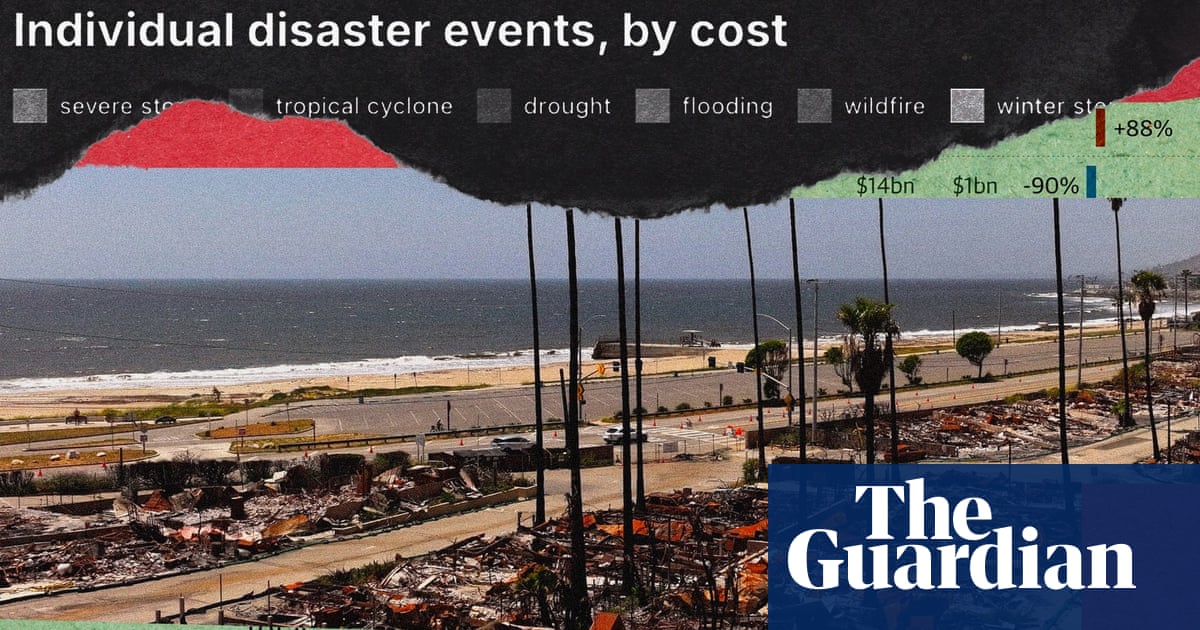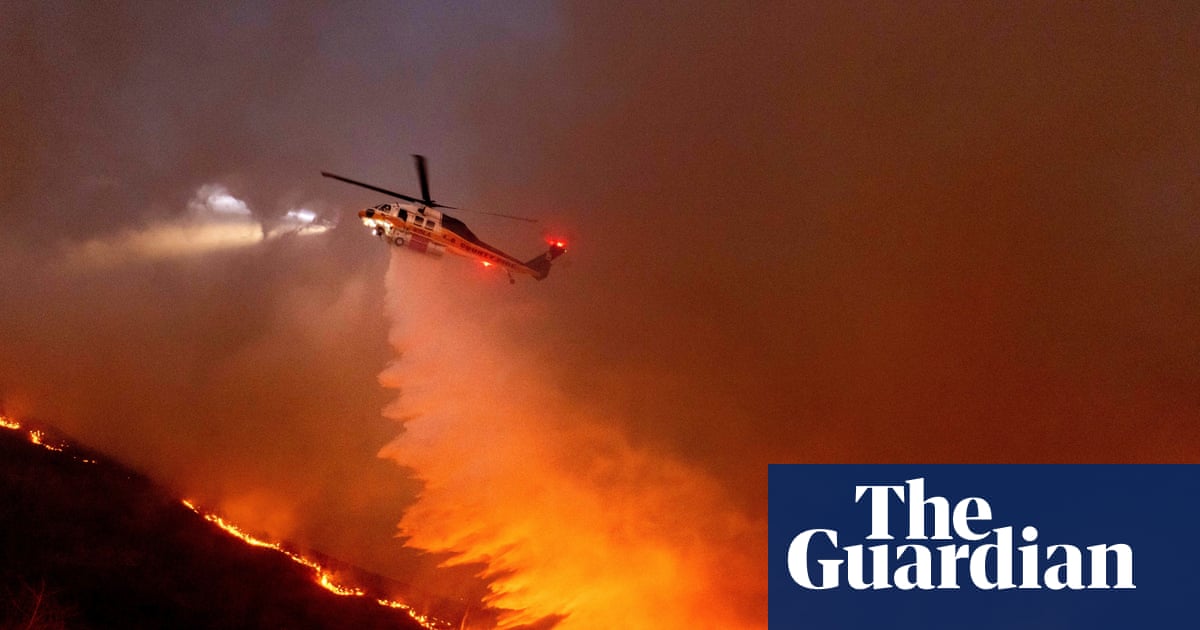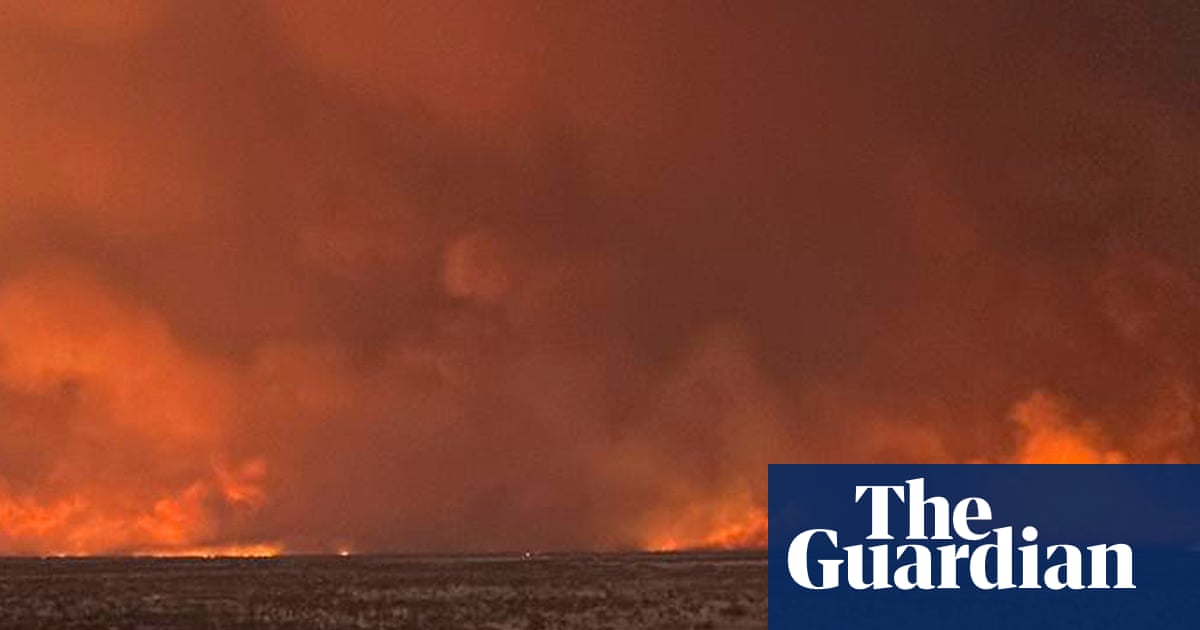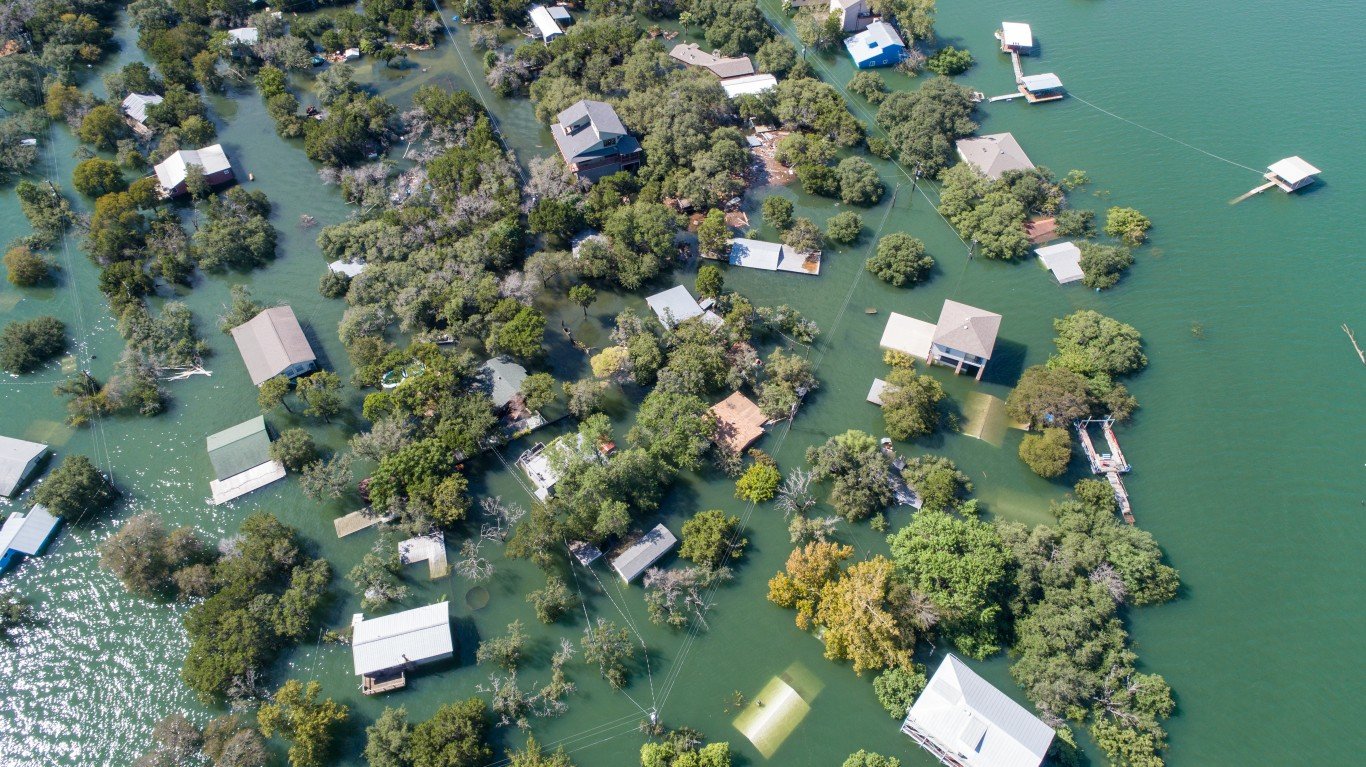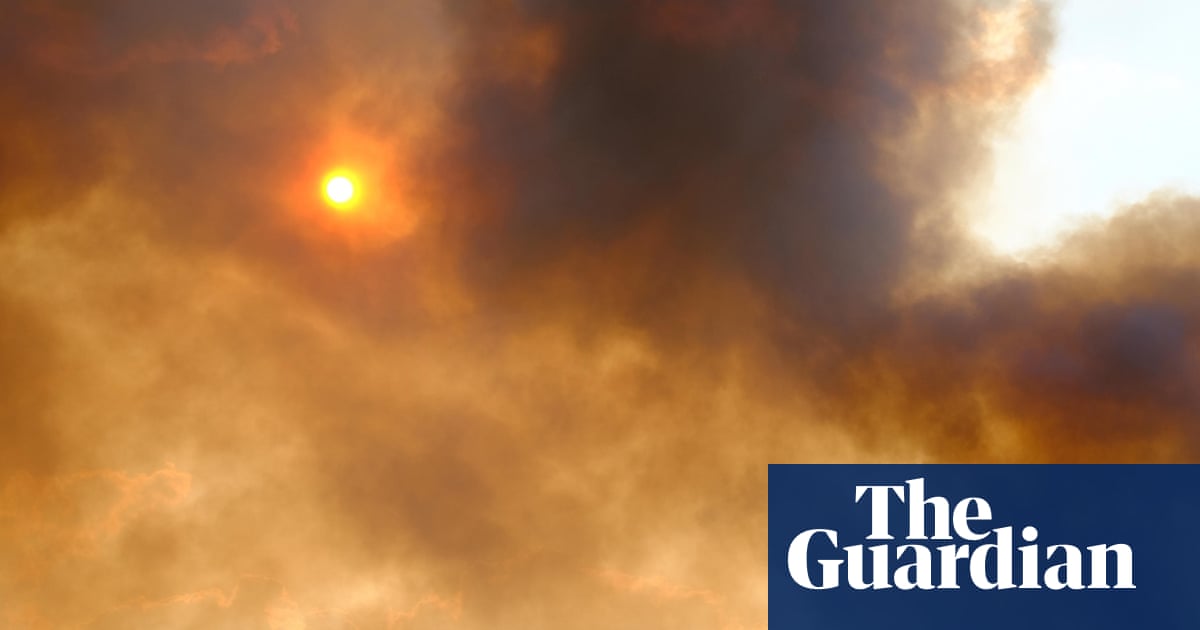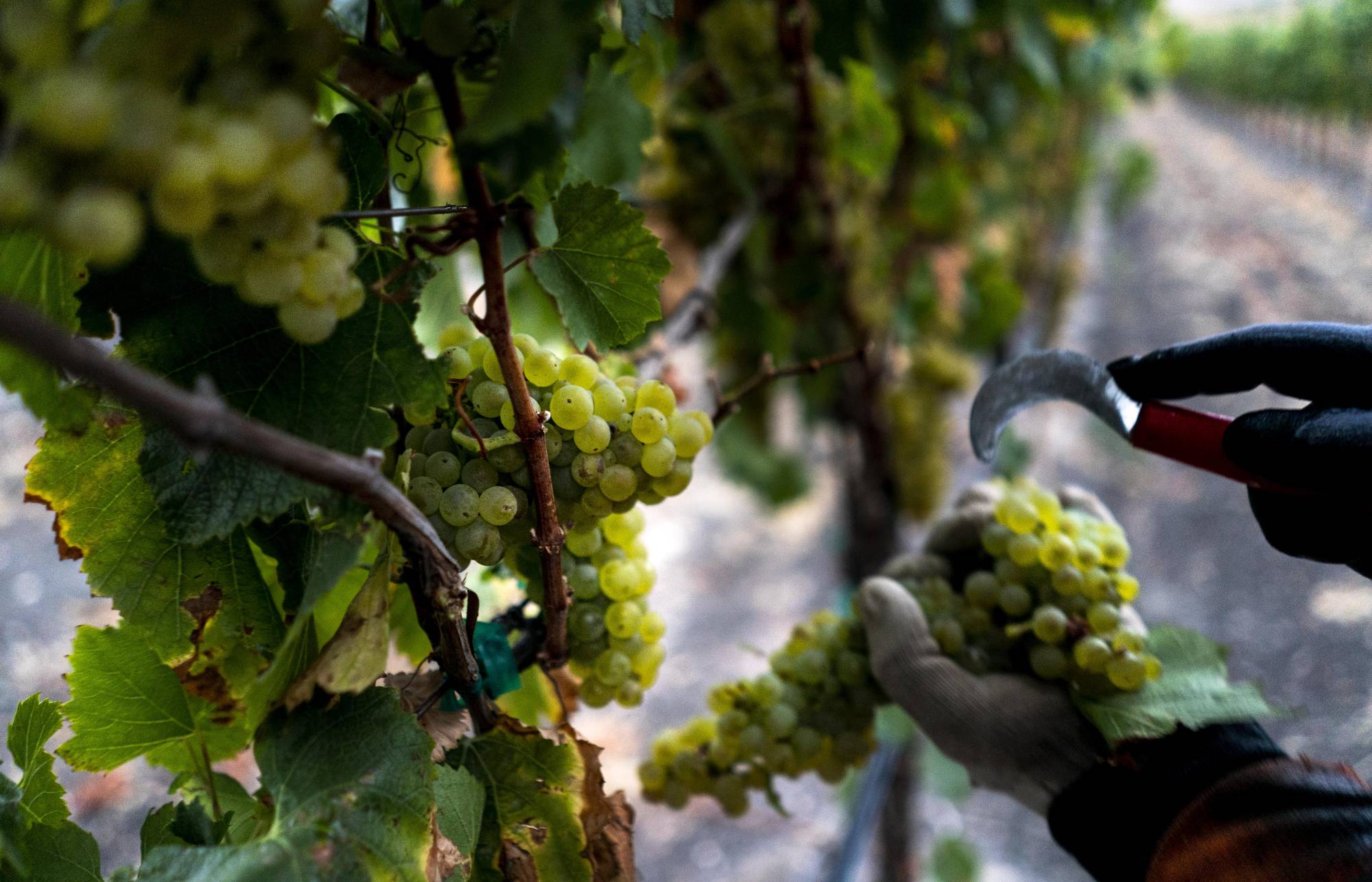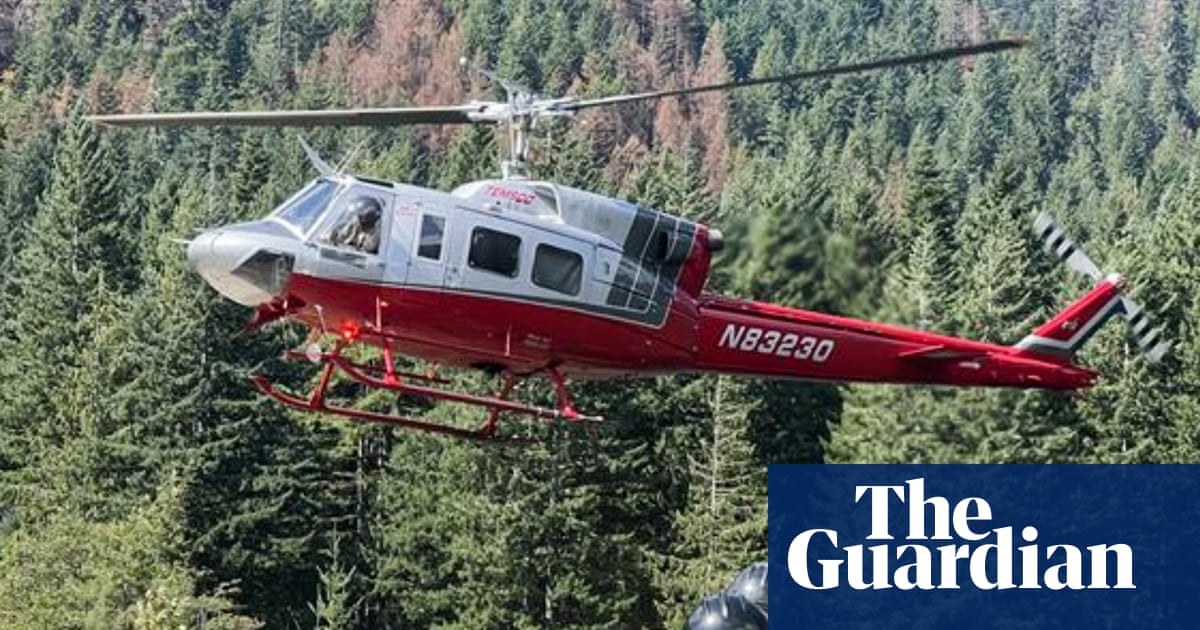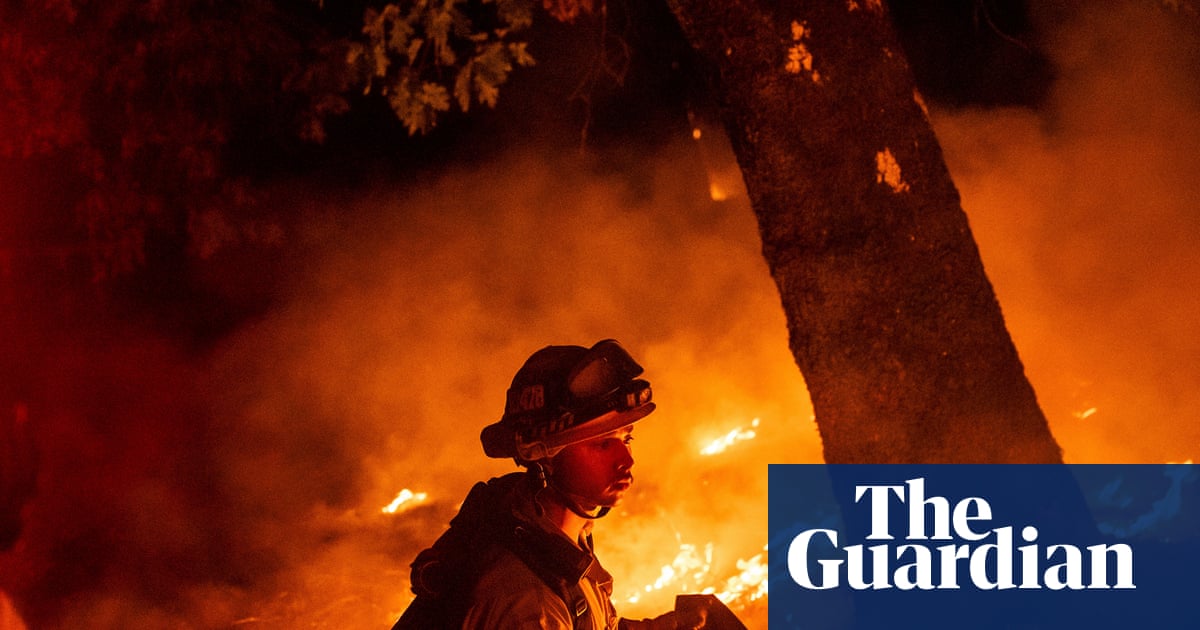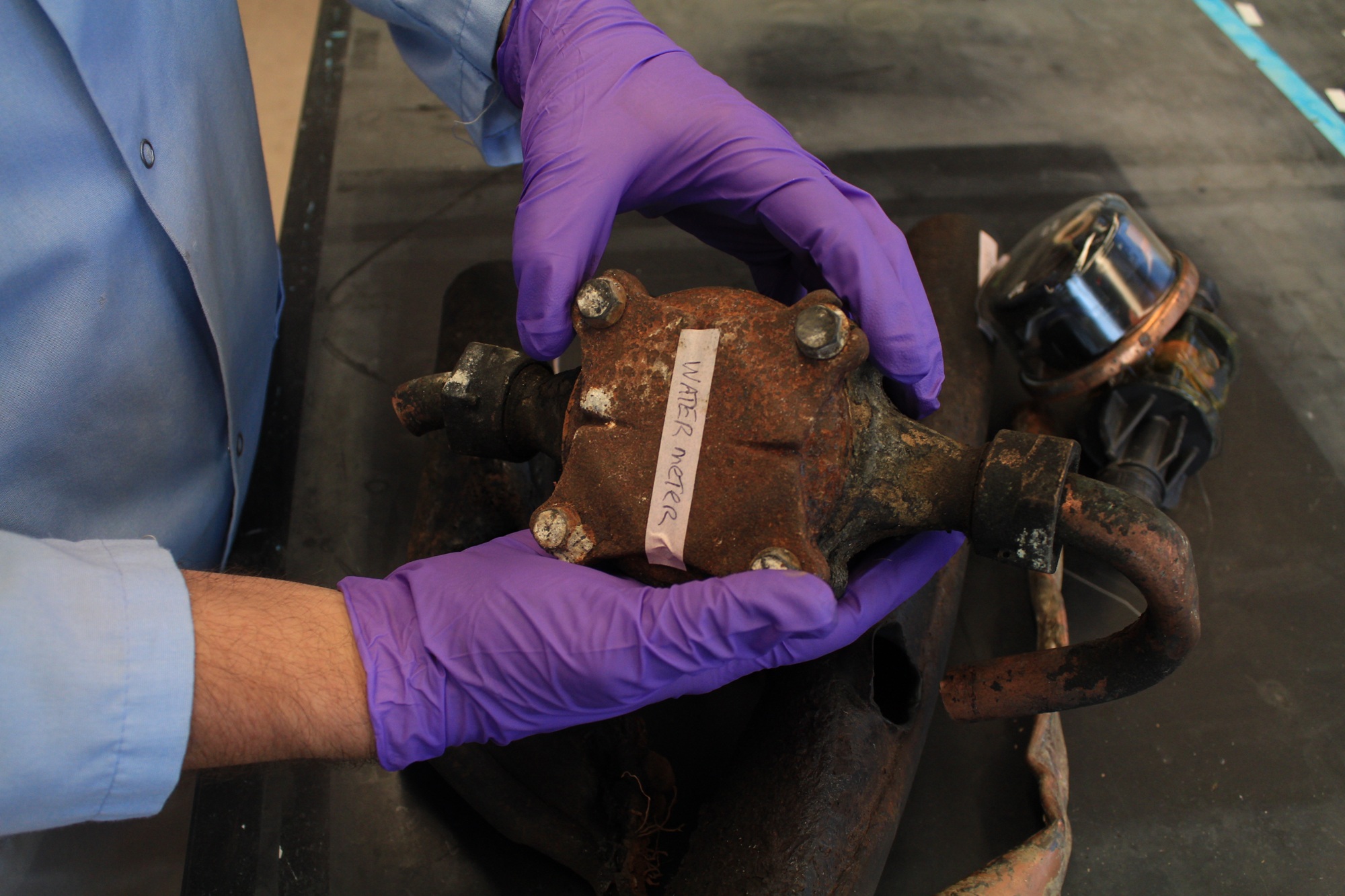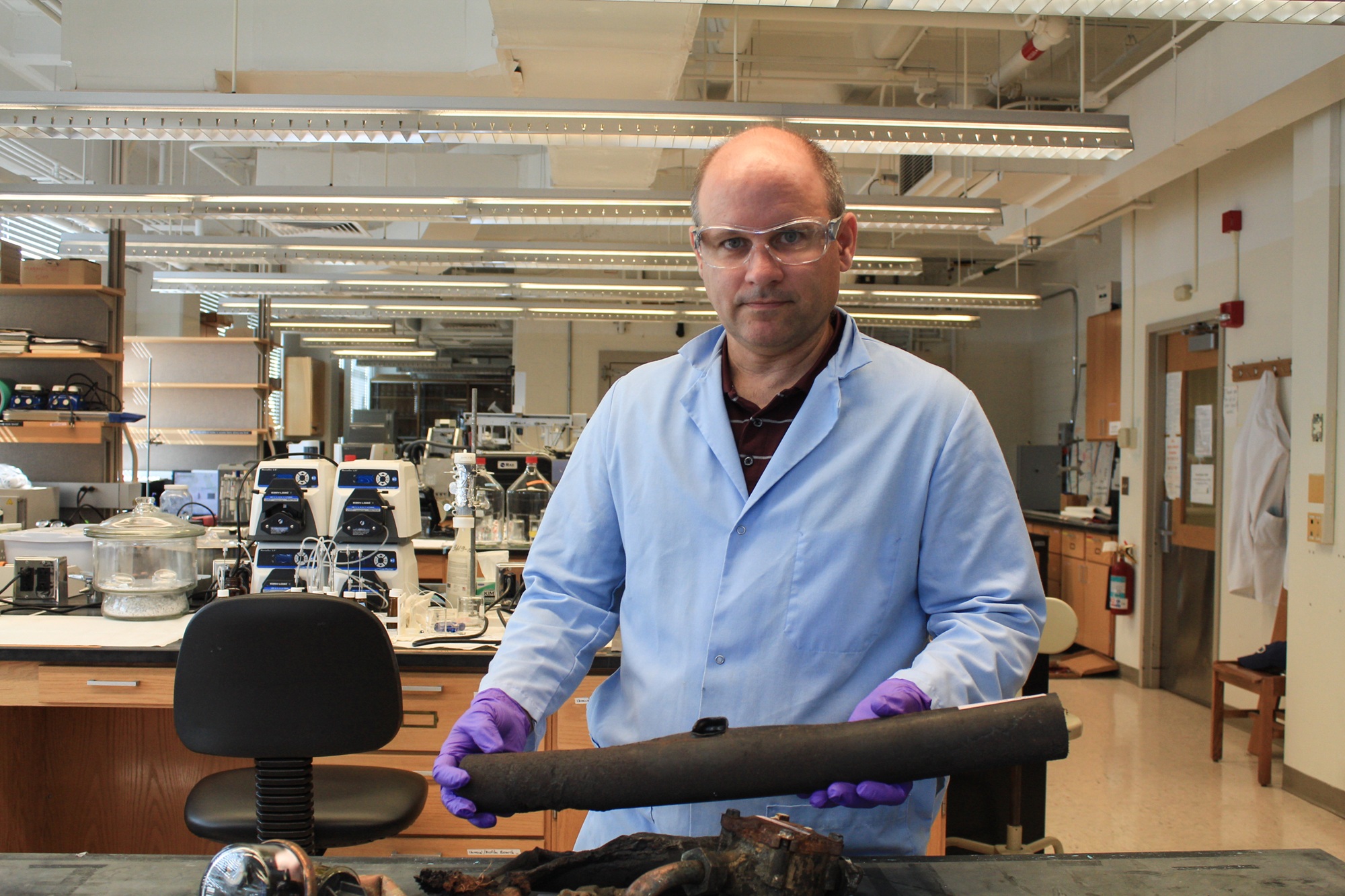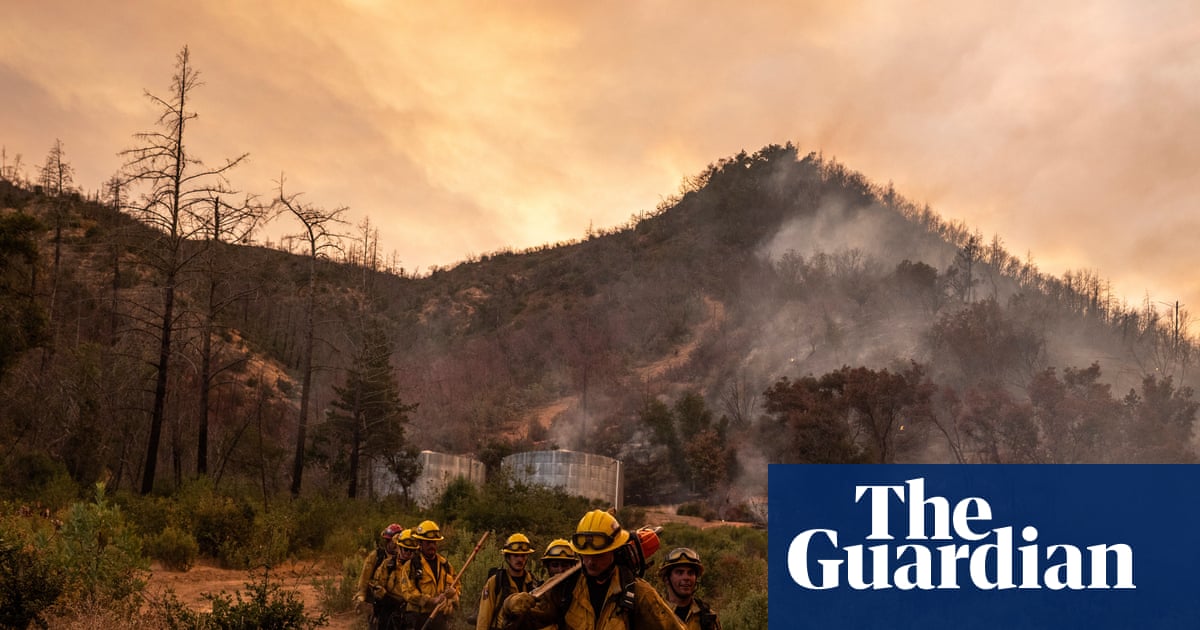#wildfires
#wildfires
[ follow ]
#climate-change #evacuations #spain #air-pollution #heatwaves #public-health #emergency-management #firefighting
fromThe Verge
3 days agoHow one mountain town hopes AI can help it fight wildfires
A popular ski resort town in Colorado is adopting a new AI Smart City Solution from Hewlett Packard Enterprise (HPE) to help it better detect wildfires, as well as update a range of other city services. Vail is expanding its firefighting toolbox as hotter, more arid weather with climate change raises wildfire risk in the western US. Colorado has suffered 11 of the 20 largest fires in state history just within the last five years.
Environment
fromThe Local France
1 week agoThe garden task the French government wants homeowners to do now
Most garden tasks are just about making the place look aesthetically pleasing - but there's one that is a legal obligation and could even be a matter of life or death. This is débroussaillement (pronounced day-broo-say-eh-mon) - the French term for clearing away brush, vegetation and dead leaves. The reason that this is important is related to wildfires - and in fact, homeowners in some parts of France, where wildfires are common, have a legal obligation to do this every year.
Environment
US news
fromLos Angeles Times
2 weeks agoDefense lawyer for man charged with igniting deadly Palisades fire calls case thin and labels it scapegoating
Jonathan Rinderknecht was indicted on felony arson and destruction charges for allegedly starting the Jan. 1 Lachman fire linked to the later Palisades fire.
fromFast Company
2 weeks agoWhy environmental resilience is the future of home design
In January 2025, Los Angeles suffered an unspeakable wildfire tragedy, destroying at least 17,000 structures, and with tens of thousands of people forced out of their homes. Almost immediately, government officials declared a state of emergency and laid out a path to rebuild " like for like." However, in the aftermath of such disasters when rebuilding from the ground up, is "like for like" the best way to proceed? These disasters provide an opportunity to future-proof our neighborhoods for the next generation of environmental challenges.
Remodel
California
fromwww.mercurynews.com
3 weeks agoNew California law aims to stabilize homeowner insurance for people who can't get private coverage
California law lets the FAIR Plan seek state-backed loans and spread disaster claim payouts over years to avoid insolvency and insurer bailouts after major fires.
fromLos Angeles Times
1 month agoL.A. County supervisors criticize their own report on January fire mistakes, calling it inadequate
Los Angeles County supervisors criticized the long-awaited $1.9-million outside investigation on government failures during the January wildfires as full of gaping holes after outcry from residents who say the report failed to answer their key question: Why did evacuation alerts come so late for so many? "I've heard from many residents, some of whom are in the audience, who share that this report leads to more questions than answers, and, quite frankly, a lot of anger,
California
fromEater LA
1 month agoThe Saddest Restaurant Closures to Know in Los Angeles, September 2025
Los Angeles's restaurants continue to face difficult headwinds, starting in 2020 with the onset of a global pandemic and exacerbating with the Hollywood labor strikes in 2023, which led to an industry-wide slowdown that's continued into 2025. From the lingering impacts of the Hollywood strikes to increased costs (labor, rent, ingredients, etc.), many variables continue to batter restaurant owners who operate on razor-thin margins.
Food & drink
fromThe Art Newspaper - International art news and events
1 month agoResidency offers Los Angeles artists affected by wildfires chance to work again
The wildfires that devastated parts of Los Angeles in January destroyed more than 18,000 homes and other structures, left dozens of people dead and led to the evacuation of hundreds of thousands of others. Among the most severely affected areas was the unincorporated city of Altadena, home to many visual artists who lost their houses and studios. Recovery for artists and everyone else impacted by the 14 separate wildfires throughout the region that month has been a slow, traumatic process.
Arts
fromLos Angeles Times
1 month ago22,500 homes lost. Over five years later, only 38% rebuilt: What California fire survivors face
In fall 2017, Piccin and his wife lost their ranch house when the Tubbs fire roared through Northern California's famed wine region. Contractors found themselves in high demand and overbooked, and the one the couple hired abandoned the project halfway through. In the time it took to find a new builder, the price tag rose by a third to $2.4 million, forcing the Piccins to sell a rental property they owned to pay the bill.
California
Environment
fromSocial Media Explorer
1 month agoTexas at a Tipping Point: New Report Details a Year of Record Heat, Billion-Dollar Storms, and Unprecedented Wildfire - Social Media Explorer
Texas experienced one of its most extreme weather years in 2024, with record heat, a 100 mph derecho, a multi-billion-dollar hurricane, and a million-acre wildfire.
US news
fromwww.npr.org
1 month agoJuly 4 wildfire in Grand Canyon still burning, questions about response still unanswered
Wildfires devastated northern Arizona gateway communities, forcing evacuations, closing Grand Canyon North Rim, and causing major financial losses for local businesses like Jacob Lake Inn.
fromwww.bbc.com
1 month agoLondon Fire Brigade sees busiest summer since 2022
The London Fire Brigade (LFB) has had its busiest summer since the extreme heat of 2022, with 83 wildfires in the capital between June and August. This was more than the summers of 2023 and 2024 combined, although was much lower than the 161 wildfires recorded in summer 2022. The most significant fire saw 25 fire engines and about 125 firefighters called to a grass fire in Dagenham on 14 July, at the height of the third heatwave of the year.
UK news
Real estate
fromBusiness Insider
1 month agoWe moved from Los Angeles to Milwaukee. Our friends were surprised, but our only regret is that we didn't do it sooner.
A family moved from Los Angeles to Milwaukee to be nearer aging parents, escape wildfire-driven poor air quality, and found greater nature access, community, and affordability.
fromwww.theguardian.com
1 month agoA tiny town in Idaho dodged incineration in 2024. Will the next wildfire take it out?
During a 2024 wildfire season described as unprecedented, the tiny central Idaho town of Stanley and nearby Redfish Lake Lodge narrowly missed incineration by two fires: the Bench Lake and then the Wapiti blazes. It took heroic firefighting efforts and favorable turns in weather conditions for the town a mountain mecca for tourists from around the world to survive without the loss of a single life or home.
Environment
fromLos Angeles Times
1 month agoCalifornia's incarcerated firefighters, who make about $30 per day, could get a big raise
In howling winds and choking smoke during the January fires that devastated Altadena and Pacific Palisades, more than 1,100 incarcerated firefighters cleared brush and dug fire lines, some for wages of less than $30 per day. Those firefighters could soon see a major raise. On Thursday, California lawmakers unanimously approved a plan to pay incarcerated firefighters the federal minimum wage of $7.25 per hour while assigned to an active fire, a raise of more than 700%.
California
fromEarth911
1 month agoClimate Adaptation: Moving in Your Region to Avoid Sea Level Rise and Wildfire
Coastlines around the world are threatened by flooding, erosion, and saltwater incursions into wells and community water supplies. In the United States, the Southeast and Northeast are most susceptible to hurricane and storm surge flooding, as well as losing freshwater supplies due to saltwater incursion as the sea rises. In the West, coastal erosion, including the loss of homes on bluffs above Pacific beaches, and water supply issues are the primary concerns facing homeowners who live near the ocean.
Environment
California
fromLos Angeles Times
1 month agoNewsom escalates clash with Trump in State of the State, declares California under siege
California presents itself as a resilient bulwark defending democracy, public services, and values against federal policies while tackling wildfires, housing, and clean-energy investments.
fromwww.ukiahdailyjournal.com
1 month agoPG&E gives update on fire season, forecast technology
So far, Strenfel said, addressing a virtual audience during a PG&E broadcast Wednesday, the company has installed more than 1,600 weather stations that help meteorologists like him track wind, temperatures and humidity across its service area in California, which he said is 70,000 square miles, mostly in Northern California, but also parts of Southern California. So many of these stations are needed, Strenfel said, because a lot of weather can happen in those square miles, because of the state's varied topography,
Environment
fromLos Angeles Times
1 month agoCalifornia joins firefighting compact with a dozen Northwest states and Canadian provinces
The Northwest Wildland Fire Fighting Compact enables its U.S. and Canadian members to share firefighting resources and technology when blazes exceed the capacity of a single jurisdiction. The partnership comes as California grapples with larger, faster and more frequent fires fueled by climate change - and as the Trump administration cuts the staff and budget of the U.S. Forest Service, the largest federal firefighting entity in the nation.
California
fromwww.theguardian.com
1 month agoThe week around the world in 20 pictures
Layne Smith, left, clears vegetation to prevent flames from spreading to his home as a fire burns through the Chinese Camp community of Tuolumne County. Multiple structures have burned in the historic Gold Rush town after thousands of lightning strikes ignited a spate of fast-moving fires in the dry rural foothills of the eastern Sierra. Chinese Camp, named for the Chinese miners who settled there, is a registered California landmark filled with historic structures and home to roughly 60 residents. Photograph: Noah Berger/AP
World news
fromwww.theguardian.com
1 month agoA California Gold Rush town was like going back in time'. Then came a wildfire
Shortly after lightning sparked dozens of wildfires in California's Sierra Nevada foothills this week, author Stephen Provost received news that devastated him. Fire was sweeping through Chinese Camp, a Gold Rush-era town that a group of Chinese miners founded in the 19th century after they were driven out of a nearby settlement. The town's almost 100 residents were forced to evacuate and news reports showed flames consuming historic buildings.
California
fromsfist.com
1 month agoLightning-Sparked Wildfire Tears Through Rural Gold Rush Town Chinese Camp, Grows to 12,000 Acres
The 6-5 Fire swept into the Gold Rush-era town of Chinese Camp, with a population of 90 people, destroying multiple structures and mobile homes. According to the Associated Press, at least five homes were on fire there Tuesday night, but photos from the town show widespread destruction of structures. According to Cal Fire, "The fire has exhibited active runs in critically dry tall grass, brush, and timber fuels. The terrain is challenging to access, requiring fire crews to hike in by foot to many remote locations."
California
fromwww.mercurynews.com
1 month agoAs summer fades, Bay Area gets a lightning show
By 5:30 a.m. Tuesday, the weather service had recorded about 4,800 lightning strikes from Sacramento to San Luis Obispo, including 1,300 that touched the ground. The weather service said an unknown amount of fires started overnight in southeast Monterey County and in southwestern Fresno County early Tuesday. It was not known immediately how big any of those fires were, but Cal Fire had not reported any new ones on its list of California's major ones.
Environment
fromwww.theguardian.com
2 months agoA common enemy beyond ideologies': Spain's PM announces plan to tackle climate crisis
He said waiting any longer would be dangerous and expensive, and criticised those who deny the realities of global heating in Spain. Over the past five years, he said, the climate emergency had caused more than 20,000 deaths and cost the public purse 32bn (28bn) in material losses. We need to mobilise as a society against climate change, which is a common enemy that lies beyond ideologies, he said.
Environment
Agriculture
fromwww.theguardian.com
2 months agoVineyards assess damage as wildfire rips through California wine country: A devastating situation'
Wildfires and controlled burns destroyed a Napa vineyard's crop and damaged vines, causing multimillion-dollar revenue loss, replanting costs, and long-term production delays.
fromABC7 San Francisco
2 months agoCalifornia's 5th largest insurer files for a 6.9% rate increase: 'It's pretty insane'
The California State Automobile Association, an insurance group affiliated with AAA, has officially filed for a homeowners' insurance rate increase. "It's pretty insane to me that, you know, when it comes to their turn to pay out, they're not doing it as they should be," CSAA Insurance customer Jesse Kramasz said. Kramasz has had an open claim with CSAA since 2020. MORE: State Farm requests another rate hike, 1 week after CA approved the last one "The day after Christmas, actually," she said. "So, we noticed a leak under our sink, which turned into this big old thing, and we just had problem after problem and delays from the insurance company and just haven't been able to get our claim settled."
California
fromwww.eastbaytimes.com
2 months agoA lot more people stay home' but Labor Day weekend travel still will be packed
It's packed, but what I can tell you is that it's typically not like you see on other warm-weather holiday weekends like Memorial Day and the Fourth of July, AAA spokesperson Doug Johnson said. The three-day weekend typically turns into a four-day break for many. Changes to school calendars in recent years may have a lot to do with it.
Travel
Environment
fromwww.theguardian.com
2 months agoOregon wildfire begins stabilizing as California blaze threatens vineyards
Wildfires in central Oregon and northern California destroyed homes, triggered evacuations, and challenged firefighters while containment slowly improved and vineyards largely avoided damage.
fromLos Angeles Times
2 months agoMonsoonal storm upends Burning Man, soaks Yosemite and sparks lightning fires across the West
In Yosemite National Park, hikers were surprisingly soaked this weekend as summer storms blew through the area. Meanwhile, thunderstorms across California's mountains launched rapid-fire lightning strikes that sparked several forest fires. And as Burning Man kicked off in Nevada's desert northwest, a major dust storm forced traffic to a halt as attendees tried to avoid the desert's wrath. The impetus for this widespread wild weather was a late-arriving monsoonal pattern, fueled by the region's lingering heat that pulled atmospheric moisture north - and, with it,
Environment
Environment
fromKqed
2 months agoBreathing Poison: You Can't Outrun Wildfire Smoke | KQED
Wildfire smoke exposure has intensified in California, significantly increasing risks for heart disease, cognitive decline, pregnancy complications, and causing widespread health impacts, especially among seniors.
fromwww.thelocal.com
2 months agoRecord EU wildfires burnt more than 1 million hectares in 2025'
Wildfires have so far ravaged more than one million hectares of land in European Union countries this year, a record since recording began in 2006, according to AFP analysis of official data. Surpassing the annual record of 988,524 hectares burnt in 2017, the figure reached 1,015,731 hectares on Thursday, an area larger than Cyprus. This calculation is based on a total compiled by AFP from estimates by country from the European Forest Fire Information System (EFFIS), at a time when Spain and Portugal are still battling wildfires.
Miscellaneous
fromSFGATE
2 months agoThe last indie bookstore in a wealthy Calif. town is going under
In the early days of December 2024, Michelle Pierce, the owner of the recently opened indie bookstore Malibu Village Books, was finally starting to feel like her little shop was finding its footing. Opened the year before, the store had just launched a big book fair at a Malibu school, and was well into making inroads with other local institutions to collaborate on events.
California
[ Load more ]

